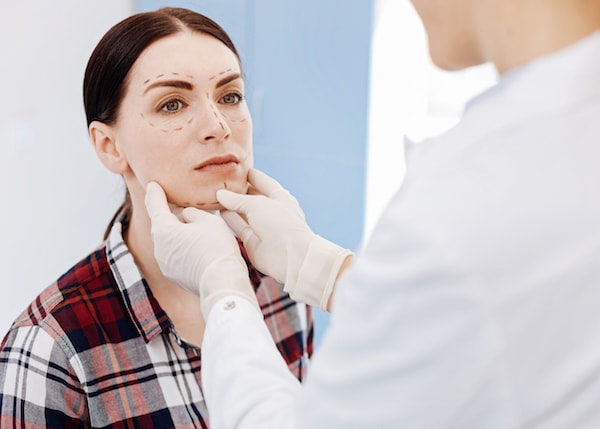
According to the website, techopedia, Augmented Reality (AR) is defined as a type of interactive, reality-based display environment that uses the capabilities of computer generated display, text and sound effects to enhance the user’s real-world experience. An Augmented Reality System was recently built by a plastic surgery research group to enable them to generate 3D stimulations of the desired results of facial reconstructive procedures and project them over the patient’s face during surgery. A study about this use of AR was reported in Plastic and Reconstructive Surgery – Global Open, the official open-access medical journal of the American Society of Plastic Surgeons (ASPS).
Augmented Reality and Plastic Surgery
Doctors at Osaka Medical College in Japan are reporting on the initial use of an Augmented Reality System to help with enhancements of the surface of the body. The findings in eight initial cases seems to show that augmented reality (AR) can be helpful in planning, executing and examining the results of facial reconstruction as well as other procedures.
According to Dr. Koichi Ueda, MD, PhD and Dr. Daisuke Mitsuno, MD, “Augmented reality is a technology that combines computer-generated images on a screen with a real object or scene. We sought to develop a sophisticated yet simple and modifiable AR technique for use during plastic and reconstructive surgery”. A 3D image of the facial structure and computed tomography scans were captured by a high-definition digital camera to achieve digital information on the fundamental facial bones for every patient. This digital data influenced the generation of 3D simulations of the ideal final results. For example, in a patient with a fractured cheekbone, the reconstruction was simulated by obtaining and reversing an image of the opposite, uninjured bone. The doctor or surgeon is provided with commercially available smart glasses to superimpose the 3D digital image of the appearance desired by the patient over the current face during surgery. The study group used software products that were free and open source to solve technical problems such as influencing and displaying the 3D simulations and then lining them up with the surgical field.
The AR system was not designed to actually guide surgery but it helps in visualizing the planned correction and achieving the final results. Each new case has allowed the group to make additional technical refinements to limitations of the AR system. However, the group is continuing the research to discover several benefits of the AR system during plastic and reconstructive surgery and to polish the display method for comparing the “before and after” images. Other possible improvements likely to happen include the ability of the AR system to quantitatively evaluate the improvements in body surface and to enable simple navigation of internal organs. Dr. Ueda said, “In all cases in this study, the body surface contour after the procedure and the ideal postoperative image almost coincided.” Both doctors believe that, if further research is made, the AR technology could become a useful tool for teaching surgical skills.
Current Use of Augmented Realty in Plastic Surgery
Current uses of the Augmented Reality System in plastic surgery include:
Types of 3D Virtual Cosmetic Surgery
Final Thoughts on Augmented Reality and Plastic Surgery
In conclusion, Dr. Ueda and Dr. Mitsuno said “Our findings are not only useful for body surface evaluation but also for effective evaluation of AR technology in the field of plastic surgery. The research team plans to conduct further studies on the importance of using the AR system during plastic and reconstructive surgery. They also hope to refine the display method for comparing ‘before and after’ images. With the development and success of the AR system, the future of plastic surgery is bright even from afar.”